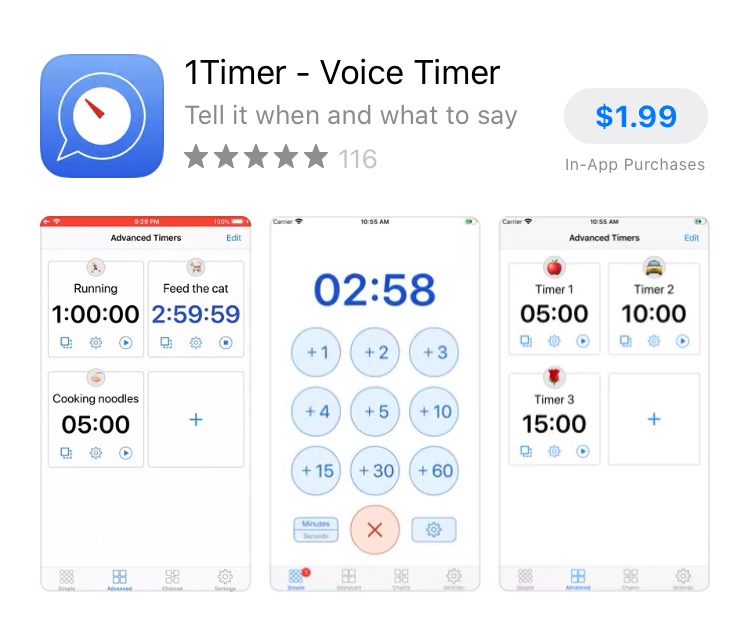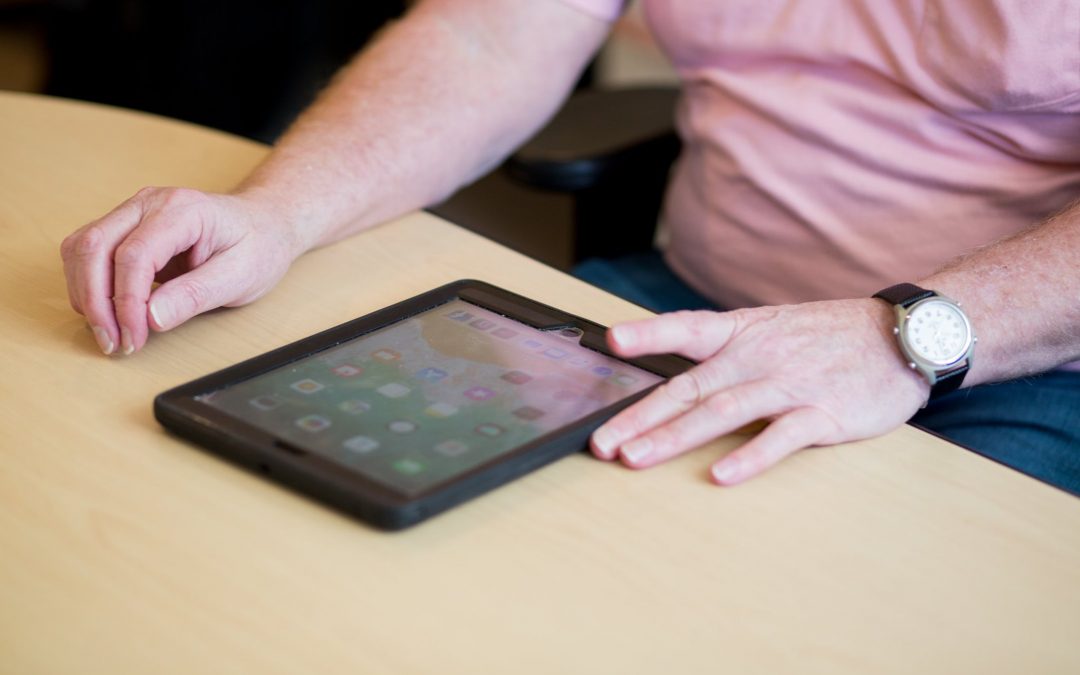
by admin | Mar 17, 2020 | Blog, News
Happy Tech Tuesday! Here’s our app pick of the month:
1Timer – Voice Interval Timer
⌛ The app provides timers with voice reminders at a frequency of your choice. It’s fully compatible with VoiceOver, and the developer has paid extreme attention to the accessibility of the app, using the iOS built-in voices to remind you how much time remains from the timer you set, and making setup easy for users who are blind or have low vision.
⏱️ The possibilities of using this app are endless – from setting a kitchen timer, to creating time-bound habits like a bedtime every day, exercise interval timing, setting count-downs for events or disciplining kids and more!
More information about the app can be found here:
https://www.applevis.com/apps/ios/productivity/1timer-voice-interval-timer

by admin | Mar 12, 2020 | Blog, News
Special considerations during the COVID-19 (coronavirus) pandemic for people who are blind/low vision:
- People who are blind or have low vision must rely very heavily on touch. Please do your part in cleaning all touchable surfaces that you know they may come in contact with.
- If you are blind/have low vision, please continue to wash your hands frequently, especially if you have to be in contact with high-touch surfaces, and avoid touching your face.
- Check in! With the CDC urging us to socially isolate, a lot of people who are blind/low vision are now cut off from their connections with others. Are your friends or loved ones affected by this? Call them and check in!
- If you are feeling ill and showing symptoms of having the virus (coughing, fever, runny nose, shortness of breath) avoid coming in contact with other people and reach out to the appropriate medical facilities.
- There may be people in your community who are blind or have low vision who are now unable to shop for necessities. With product shortages, long lines, and increased risk of viral spread from being at stores, consider offering your help to these members of our community. They may not need any help and may decline your offer, but they may also be in need and have no one to turn to. Again — check in!
Let’s help each other, and not be afraid to ask for help during these uncertain times. Please share this message.

by admin | Mar 10, 2020 | Blog, News
March is Workplace Eye Wellness month – each workplace poses different hazards, but one of the most common is blue light.
Blue light rays have the shortest wavelengths (and highest energy). They are sometimes called blue-violet or violet light. This is why the invisible electromagnetic rays just beyond the visible light spectrum are called ultraviolet (UV) radiation.
🕶️ Sunlight is the main source of blue light, and being outdoors during daylight is where most of us get most of our exposure to it. But there are also many man-made, indoor sources of blue light, including fluorescent and LED lighting and flat-screen televisions, the display screens of computers, electronic notebooks, smartphones and other digital devices, which all emit significant amounts of blue light.
⚠️ What are the hazards? ⚠️
The eye is not very good at blocking blue light – it penetrates all the way to the retina (the inner lining of the back of the eye) and laboratory studies have shown that too much exposure to blue light can damage light-sensitive cells in the retina. This can lead to macular degeneration and permanent vision loss.
Blue light also contributes to digital eye strain, and can lead to other eye problems in the long term. What can you do to protect your eyes? Try to limit your screen time & get some blue light filters or protective eyewear!

by admin | Mar 10, 2020 | Blog, News
Another person has lost sight in their eye because of a growing fad – eyeball tattoos. Learn more in this article:
https://www.insider.com/a-model-went-blind-after-getting-her-eyes-tattooed-black-2020-2?fbclid=IwAR38FqTqSGGDbBdPv17M5wBzf3Yh82HhKkCVb2dqJghbNIBNyMtaygX0G7c
If the thought of eye tattooing itself doesn’t make you shudder, here are a few things to consider:
👁️ Eye tattoos, also known as sclera tattoos, are created by injecting a small amount of ink over the sclera, the white portion of the eye, and under the membrane covering the eye, the conjunctiva.
This process is described as having to be relaxed with eyes wide open, and someone touching your eye ball with a burning cigarette. Yuck!
Any ophthalmologist will tell you that doing so is not safe for your eyes, and will likely cause permanent inflammation to the wall of the eye. Other potential risks include constant discomfort, blurred vision, vision loss, glaucoma, cataracts, injury to the cornea and blindness.
We vote “nay” on this fad and recommend steering clear of eyeball tattooing!

by admin | Mar 8, 2020 | Blog, News
Did you remember to turn your clocks forward? 🕒
Daylight Savings Time started today! In the United States, it starts on the 2nd Sunday in March and ends on the 1st Sunday in November.
Some clocks may have changed automatically – this would include any devices receiving a radio frequency signal, such as your cell phones, laptops, iPads and so forth.
What are the best clocks to use if you are blind or have low vision? There’s a variety of options, from using Braille-coded manual clocks to ones that talk to you. Here’s a list of devices that are recommended by amazon:
https://www.amazon.com/…/Explore-talki…/74abb5f54e3775b9d424

by admin | Mar 7, 2020 | Blog, News
Have you been asked to guide a person who is blind/low vision? Here are some pointers:
- Allow the person you are guiding to hold your arm and follow as you walk.
- Move your guiding arm behind your back when approaching a narrow space so the person you are guiding can step behind you and follow single-file.
- Stop briefly at a curb or at the beginning of a flight of stairs. Tell the person you are guiding whether the steps go up or down, and allow them to find the handrail and locate the edge of the first step before proceeding.
- Do not grab the person you are guiding by the hand, arm, or shoulder and try to steer them. Nor should you grab the person’s cane or the handle of a dog guide’s harness.
Want to find out more about orientation and mobility for people who are blind/low vision? Reach out to us at 973-627-0055 ext. 1312!






